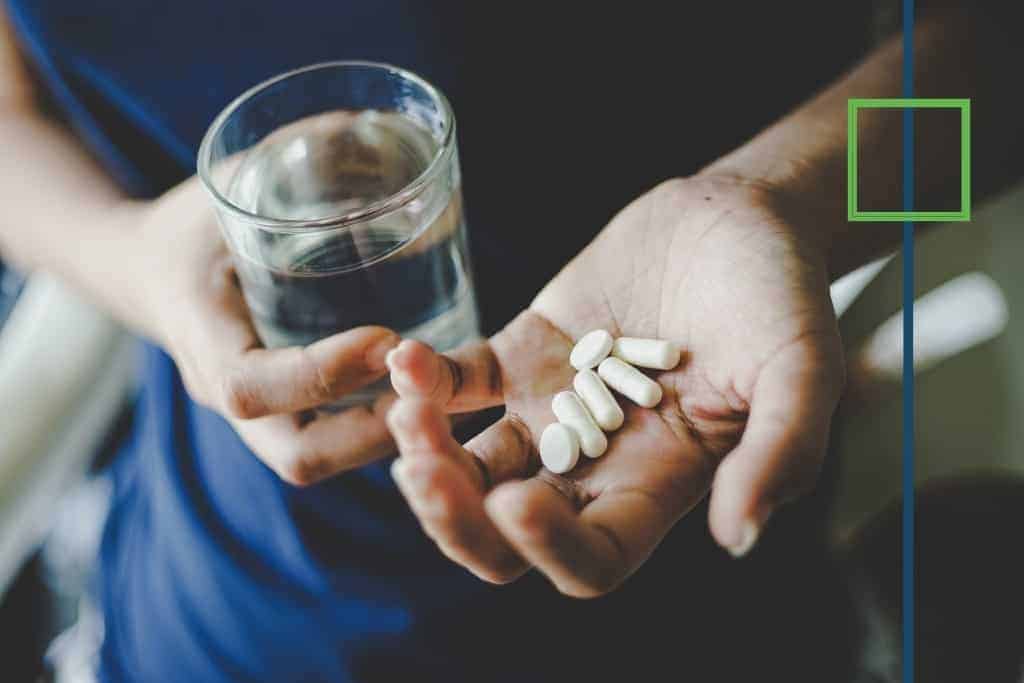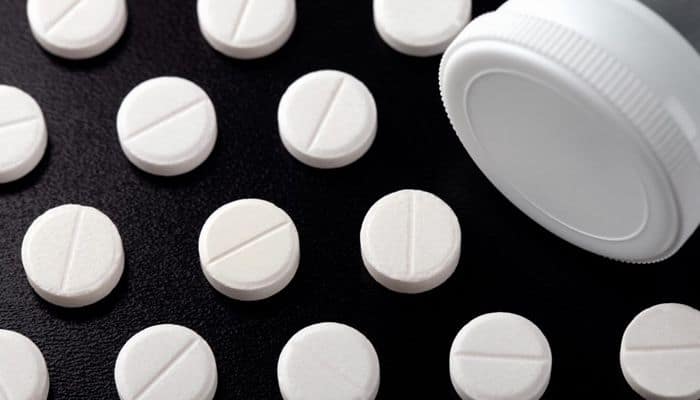What is Xanax? Mixing Xanax and Oxycodone
Xanax vs Oxycodone
Xanax, a brand name for alprazolam, is a powerful benzodiazepine that is only recommended for up to six weeks. Despite that, American physicians continue to refill prescriptions at often alarming rates. As a result, the number of people seeking treatment for primary benzo addictions continues to rise — from 6,929 in 2002 to 17,019 a decade later in 2012, according to the Substance Abuse and Mental Health Services Administration.
Some people who are dependent on Xanax never abused drugs before. They were suffering from anxiety and looking to the medical field for support and relief. They started using Xanax and felt a vast improvement in symptoms. Some then assumed more of the drug would produce an even greater effect, so they misused it in larger doses. Others use it for too long, often with a doctor’s permission. They don’t realize they’re addicted to it until it’s too late.
Some people may try to decrease their dose, and experience Xanax withdrawal symptoms that mirror their initial anxiety. They assume they cannot cope without the drug and keep using or abusing it. Sometimes the anxiety symptoms that resurface are caused by substance-induced symptoms that would otherwise dissipate if the drug abuse stopped.

Of course, abusers of this drug aren’t limited to those with a prescription in hand. Many are young people who get the drug from friends. College students are especially at risk for dependency since their rate of abuse of these drugs has peaked in recent years. SAMHSA notes those rates are higher among individuals with mental illness, too, touting that 31.6 percent of college students who abused prescription drugs in 2010 had a mental health disorder, compared to 15 percent of those who did not have a mental health disorder.
Addiction is also present in teens, with two-thirds who abuse prescription drugs noting that it’s easy to get their hands on prescription drugs – either from family members or friends at school. This concerns the long-term health of future generations who may be damaging their brains and bodies from a very young age.

Get Your Life Back
Find Hope & Recovery. Get Safe Comfortable Detox, Addiction Rehab & Dual Diagnosis High-Quality Care.
Hotline(844) 597-1011What is Oxycodone?
Oxycodone is a prescription medication used to treat moderate to severe pain. It is a narcotic analgesic, which works by blocking pain signals from the brain. Oxycodone can be habit-forming, and it is vital to use it only as directed by your doctor. Misuse of oxycodone can lead to addiction and other serious health problems. If you or someone you know is addicted to oxycodone, seek help immediately. Many treatment options are available, and with support, you can overcome addiction and live a healthy life.
About 52 million Americans older than 12 have used prescription medications nonmedically at some point in their lives. Many become addicted to prescription meds, and that process happens slowly. Some people don’t notice the moment they shift from recreational abuse to intense addiction, but when addiction takes hold, it can be serious.
Due to the potential for abuse and addiction with Oxycodone, the drug’s manufacturer, Endo Pharmaceuticals, states in Percocet’s prescription information that it is normally reserved for those who are tolerant to other opioids or those who haven’t obtained pain relief from other sources.
An individual can overdose on Oxycodone if the drug is taken more often than prescribed, if tablets are crushed or chewed, or if it is combined with other sedatives, such as alcohol or sleeping pills. Overdose is considered a medical emergency. Without prompt treatment, serious health effects and even death can occur.
Long-term oxycodone drug addiction negatively impacts an individual’s long-term health, as well as their psychological and emotional well-being. Thankfully, comprehensive addiction treatment can help individuals safely withdraw from this prescription drug and stop the abuse of all substances.
Mixing Xanax and Oxycodone
Mixing Xanax and oxycodone (brand name OxyContin) can lead to severe respiratory depression, long-term substance use disorders, and even death. Xanax is a benzodiazepine used to treat anxiety disorders and panic disorders. Oxycodone is an opioid painkiller used to treat chronic and severe pain forms. Oxycodone and Xanax see widespread use as directed and as targets for substance abuse.
In the United States, prescription opioids and benzodiazepines have “black box” labels which warn mixing the two substances can be fatal. A black box warning is reserved for prescription drugs with serious health risks.
Can You Take Xanax with Oxycodone?
Both the illicit use of Oxycodone and Xanax, as well as overprescribing by doctors, contribute to the opioid crisis. Between 2002 and 2014, the number of patients receiving prescriptions for Oxycodone and Xanax rose by 41 percent.
Can You Mix Oxycodone and Xanax? Xanax and oxycodone cannot be taken together, as the combination can lead to oversedation, overdose, coma, or death. Xanax and oxycodone are two drugs that are frequently prescribed to people, and while they do have therapeutic benefits, some risks come with their use. The risk of adverse side effects may be even greater with the oxycodone Xanax combination.
Mixing Xanax and oxycodone can be dangerous or even deadly. Xanax and Oxycodone are some of the most abused drugs globally, and combining them is highly risky. Taking Oxycodone and Xanax on the same day increases the risk of an overdose because both medications depress central nervous system activity, specifically respiration. Because they are both central nervous system depressants, either drug may heighten the effects of any other medication taken simultaneously because they both affect vital functions such as respiration.
Mixing Xanax and Oxycodone can lead to dangerous side effects and suppress a person’s automatic breathing reflex.
Side effects that are associated with this stronger high may include:
- Impairment
- Sedation
- Numbness
- Dizziness
- Pain relief
- Drowsiness
The black box warning on Xanax labels states that taking drugs and opioids together can be fatal. In addition to this life-threatening interaction, Xanax and OxyContin have other adverse health effects.
The risk of life-threatening overdose increases when opioids are combined with other depressants, such as benzodiazepines or alcohol. In 2020, 16 percent of overdose deaths involving opioids also involved benzodiazepines, a prescription sedative commonly prescribed for anxiety or to help with insomnia. Benzodiazepines work by raising the level of the inhibitory neurotransmitter GABA in the brain.
The Centers for Disease Control and Prevention (CDC) states that mixing Xanax and oxycodone can be dangerous or even deadly. For this reason, it recommends that doctors avoid prescribing Xanax and oxycodone together whenever possible. The Food and Drug Administration (FDA) issued a Black Box Warning against taking Xanax and oxycodone because it found that using either drug at high doses is associated with an increased risk of death. However, the CDC notes that patients taking low-dose stable doses of benzodiazepines may be able to take an opioid for severe short-term pain if their doctor thinks it is appropriate.
The U.S. Food and Drug Administration recommends that clinicians avoid prescribing benzodiazepines concurrently with opioids whenever possible. Both prescription opioids and benzodiazepines now carry boxed warnings on their labels, highlighting the potential dangers of using these drugs together.
Patients prescribed more than one drug for their medical and mental health conditions can be at risk of abusing them or taking them in any way other than specified, which is why they must disclose all other substances and medications they use and consult with their healthcare teams about avoiding or managing the risks of using certain medications in combination.
To answer the questions, “Can I take oxycodone and Xanax?” or “Can you take Xanax with oxycodone?”; Xanax and oxycodone, if prescribed by a doctor, can be taken together only if the patient intends to seek treatment for a medical condition. The combination of these powerful medications can lead to overdose or death.
Effects Of Mixing Xanax & Oxycodone
Mixing Xanax and Oxycodone may be an intense way of getting “high.” The combined effects of Oxycodone and Xanax may be linked to specific receptors in the central nervous system (CNS).

Get Help. Get Better. Get Your Life Back.
Searching for Accredited Drug and Alcohol Rehab Centers Near You?
Even if you have failed previously and relapsed, or are in the middle of a difficult crisis, we stand ready to support you. Our trusted behavioral health specialists will not give up on you. When you feel ready or just want someone to speak to about therapy alternatives to change your life call us. Even if we cannot assist you, we will lead you to wherever you can get support. There is no obligation. Call our hotline today.
(844) 597-1011Side effects that are linked to this more potent high may include:
- Impairment
- Sedation
- Numbness
- Dizziness
- Pain relief
- Drowsiness
Dangers Of Mixing Xanax & Oxycodone
The black box warning on Xanax labels warns that taking benzodiazepines and opioids together can be fatal. Along with this life-threatening interaction, Xanax and Oxycodone can cause other health effects.
Risk Of Drug Overdose
The additive depressant effects of alprazolam and oxycodone can make their effects much stronger. The threshold to overdose may also be much lower. An opioid overdose likely includes respiratory depression (severely slowed breathing) and unresponsiveness and can be fatal.
In 2017, benzos were involved in over 33 percent of prescription opioid overdose deaths. While synthetic opioids like fentanyl are growing points of concern, prescription opioids (like oxycodone or hydrocodone) still see large overdose numbers every year. The high involvement of benzodiazepines in prescription opioid overdose deaths suggests both substances are easy to access and abuse.
Memory Problems
Opioid analgesics and benzodiazepines are linked to memory problems as long-term side effects. Opioid abuse can cause persistent issues with attention, while some studies link benzodiazepines to a higher risk of dementia later in life. Both drugs are linked to forms of amnesia. How opioids and benzodiazepines can lead to memory problems may need further study. Taking both substances responsibly can reduce your risk of long-term memory impairment.
First-class Facilities & Amenities
World-class High-Quality Addiction & Mental Health Rehabilitation Treatment
Rehab Centers TourRenowned Addiction Centers. Serene Private Facilities. Inpatient rehab programs vary.
Addiction Helpline(844) 597-1011Proven recovery success experience, backed by a Team w/ History of:
15+
Years of Unified Experience
100s
5-Star Reviews Across Our Centers
10K
Recovery Success Stories Across Our Network
- Low Patient to Therapist Ratio
- Onsite Medical Detox Center
- Comprehensive Dual-Diagnosis Treatment
- Complimentary Family & Alumni Programs
- Coaching, Recovery & Personal Development Events
Abuse of Opiates and Benzos
Opioid painkillers and benzodiazepines are two of the most frequently abused prescription drugs worldwide, although they are commonly prescribed together. Medical researchers have been concerned about this combination since the 1970s when the trend began to surface. A Drug Abuse Warning Network report shows that combining opioid medications and benzodiazepines increases the risk of overdose, leading to emergency medical care.
Another report published in the British Medical Journal suggests that, while some of these emergency room visits involve prescribing practices that accidentally mix benzodiazepines and opioids in dangerous quantities, some patients take more of these drugs than prescribed, or they get a “high” off taking higher doses than prescribed of both medications. They noted that benzodiazepines enhanced the effects of opioid painkillers, which means this drug combination has a high potential for abuse.

The BMJ study found that, of 2,400 veterans in the study’s population who died because of a drug overdose while taking opioid painkiller prescriptions, 49 percent had been concurrently prescribed benzodiazepines. While some of these individuals may have been abusing opioid painkillers and benzodiazepines to create a high, an article published in the Washington Post suggests that people who use these two medications together must be exposed to this combination in the first place, and that is typically through their doctors’ prescribing practices.
For example, people who suffer acute or chronic pain may receive opioids like Vicodin to treat the pain on a long-term basis while also receiving a prescription for Valium to treat muscle spasms. Or, if individuals suffer from anxiety, they may receive a Xanax prescription from their therapist while also receiving oxycodone to treat chronic pain. In February 2016, lawmakers and regulators began pushing the Food and Drug Administration to issue a black box warning on prescription opioid painkillers and benzodiazepines about mixing these two medication types.
World-class, Accredited, 5-Star Reviewed, Effective Addiction & Mental Health Programs. Complete Behavioral Health Inpatient Rehab, Detox plus Co-occuring Disorders Therapy.
CALL(844) 597-1011End the Addiction Pain. End the Emotional Rollercoaster. Get Your Life Back. Start Drug, Alcohol & Dual Diagnosis Mental Health Treatment Now. Get Free No-obligation Guidance by Substance Abuse Specialists Who Understand Addiction & Mental Health Recovery & Know How to Help.
Polysubstance Dependent Treatment
If a person overdoses on benzodiazepines like Xanax or Valium, painkillers like Vicodin or oxycodone, or a combination of these medications, it is important to get emergency medical help as soon as possible. Call 911, and stay with the person until help arrives.
For people who struggle with an addiction to prescription painkillers, benzodiazepines, or both, comprehensive addiction rehabilitation can help. With adequate care, people can overcome their addictions and avoid overdose.
Treatment options for addiction include:
- Addiction Detox: A highly supervised program to help patients overcome the uncomfortable effects of withdrawal.
- Inpatient rehab: A live-in rehab program in a highly structured hospital-like setting.
- Medication-assisted treatment (MAT): The use of medications in the course of addiction treatment.
Reclaim Your Life From Polysubstance Abuse
Mixing Xanax and oxycodone can lead to severe respiratory depression, long-term substance use disorders, and even death. We Level Up rehab & detox center can provide you, or someone you love, the tools to recover from polysubstance addiction with professional and safe treatment. Feel free to call us to speak with one of our counselors. We can inform you about this condition by giving you relevant information. Our specialists know what you are going through. Please know that each call is private and confidential.
Experience Transformative Recovery at We Level Up Treatment Centers.
See our authentic success stories. Get inspired. Get the help you deserve.
Start a New Life
Begin with a free call to an addiction & behavioral health treatment advisor. Learn more about our dual-diagnosis programs. The We Level Up Treatment Center Network delivers recovery programs that vary by each treatment facility. Call to learn more.
- Personalized Care
- Caring Accountable Staff
- World-class Amenities
- Licensed & Accredited
- Renowned w/ 100s 5-Star Reviews
We’ll Call You
Search More Florida Rehab & Related Information
Sources
[1] Centers for Disease Control and Prevention – Prescription Opioid and Benzodiazepine Medications and Occupational Safety and health information for Employers and Healthcare Providers.
[2] Food and Drug Administration – OxyContin (oxycodone hydrochloride)
[3] Food and Drug Administration – XANAX Label
[4] National Institute on Drug Abuse – Benzodiazepines and Opioids
[5] National Library of Medicine: PubMed Central – Polydrug abuse: A review of opioid and benzodiazepine combination use
[6] NIDA: Benzodiazepines and Opioids


